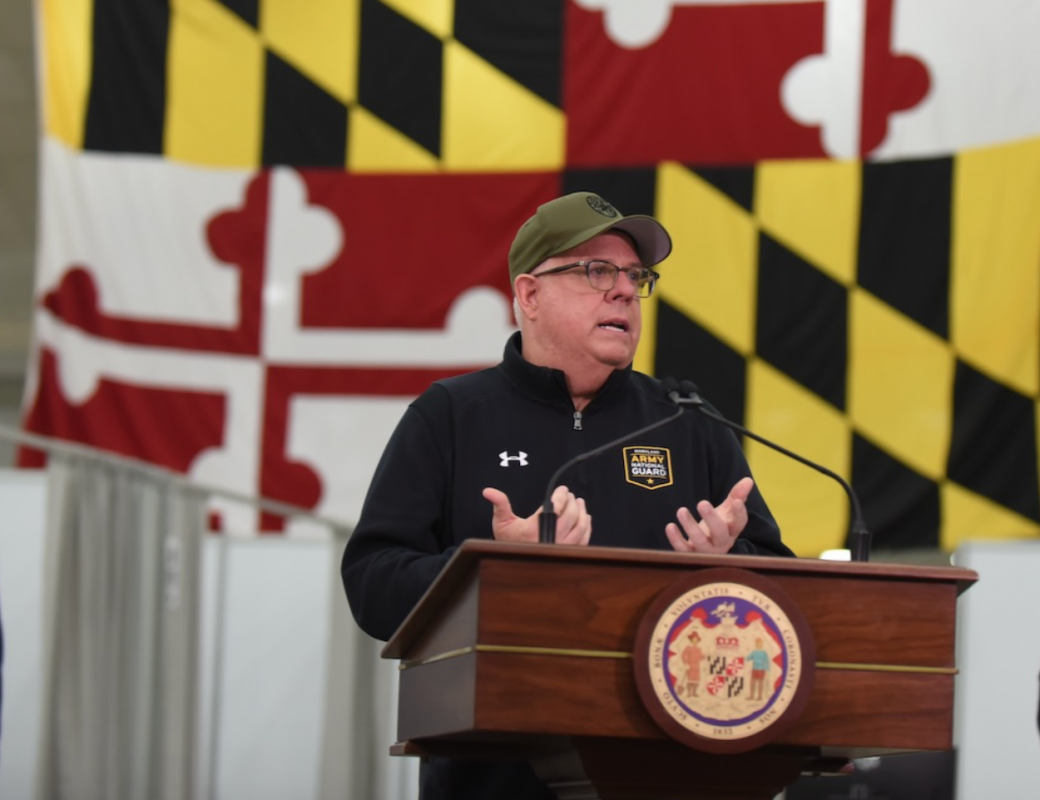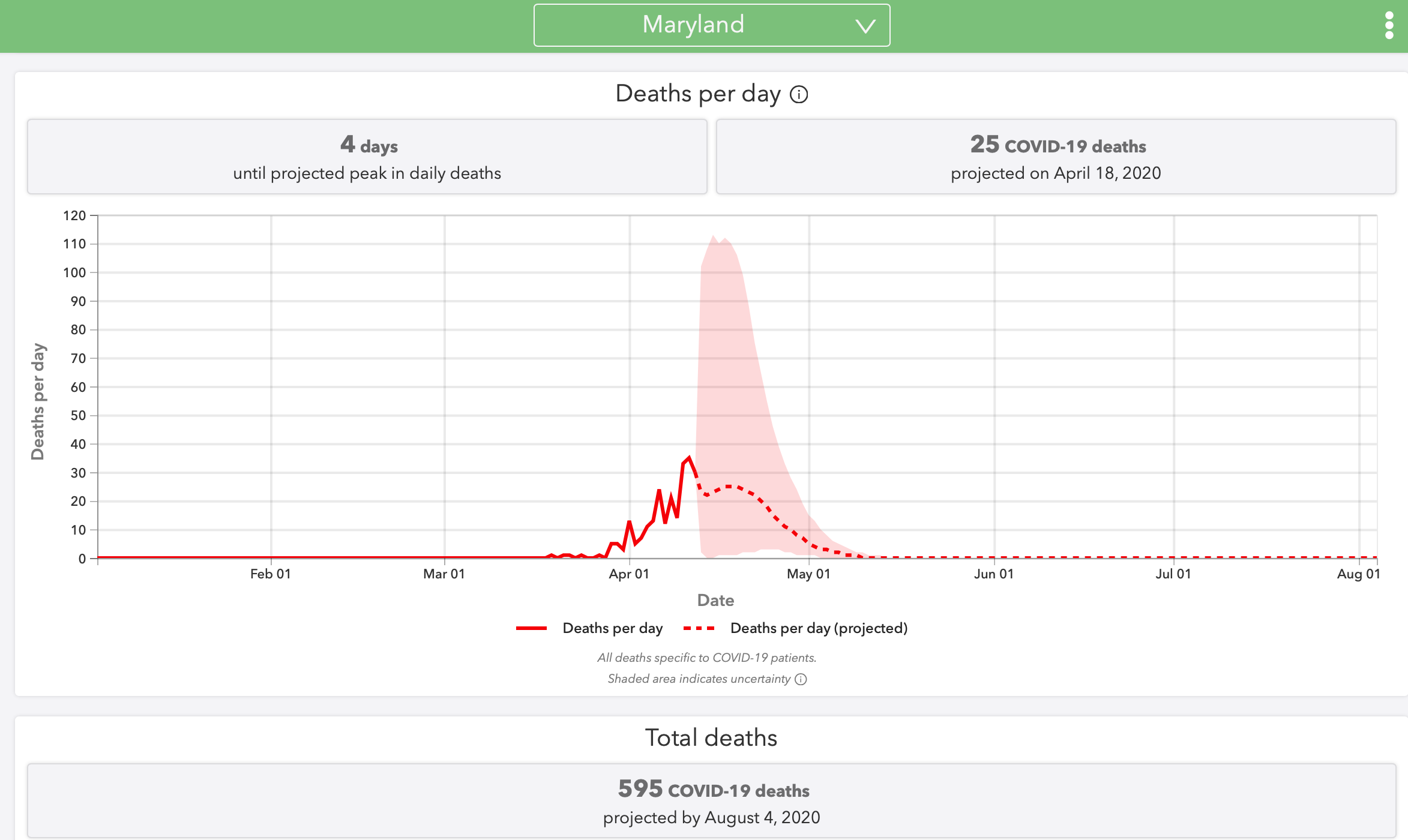
As the number of confirmed COVID-19 cases and the death toll in Maryland climbed again Monday, Gov. Larry Hogan and former Baltimore City health commissioner Leana Wen discussed the potential reopening of the economy, which President Donald Trump has been pushing for, on CNN.
Despite concerns from White House public health experts and governors and elected officials from around the country, President Trump continued to press for the removal of work and business restrictions on Twitter and during his daily briefing yesterday.
“I have been having discussions with my team and top experts,” Trump said, reading from a prepared statement before an ultimately contentious late afternoon event with members of the media. “We’re very close to completing a plan to open the country . . . We will soon finalize new and very important guidelines to give governors the information they need to start safely opening their states. My administration’s plans and corresponding guidelines will give people the confidence they need to begin returning to normal life.”
The number of confirmed COVID-19 cases in the U.S. surpassed 600,000 by Tuesday, including more than 25,000 deaths, the highest total of any country to date.
Earlier Monday, however, Gov. Hogan noted on CNN with Anderson Cooper that the decision to restrict commercial activity in Maryland, as well as more than 40 other states, was made by governors—not the president or federal government.
“[We’ve been] talking with our scientists and our doctors, some really smart folks, including Dr. Scott Gottlieb, who is the former FDA commissioner, [Dr.] Tom Inglesby from Johns Hopkins, along with some of our business leaders about how we would go about this in a safe way,” Hogan said. “I think it is something the governors are taking a lead on and will continue to do so.”
When Cooper replied that Trump was now making the case that the decision to reopen the economy was his—and not the governors’—Hogan pushed back against the president’s claim. “It’s not my understanding of the Constitution,” Hogan said.
In terms of the federal stimulus package, Hogan also noted none of the funding was directed to state governments to help alleviate local economic losses and growing budget deficits due to the collapse of state revenues.
“States are really in a position to be able to help get our economies back on line, and we’ve also suffered major revenue losses that we need to provide the basic services to all the people in our states,” Hogan said. “We made the tough decisions to shut things down and to put in place these tough social distancing practices, which are having an impact on the economy and we need that help from the federal government so we can help get the economy back on track when it is safe to do so.”
Hogan, who is chairman of the National Governors Association, told Vice President Mike Pence in a conference call Monday that governors across the country need $500 billion to save their budgets.
The number of confirmed COVID-19 cases topped 9,400 in the state by Tuesday. More than 300 deaths have also been reported in Maryland to date, with the African-American community disproportionately impacted. The latest modeling from the University of Washington’s Institute for Health Metrics and Evaluation predicts that Maryland’s daily number of cases and deaths will peak this week, level off, and then steadily decline into the first weeks of May.

Dr. Leana Wen, the former Baltimore City health commissioner and current visiting professor of public health at George Washington University, cautioned in a separate CNN interview that while the country may seeing a peak, in terms of daily cases and deaths from COVID-19, the outbreak of the virus is far from contained.
“The peak doesn’t mean that deaths have stopped,” Wen told CNN’s John King. “Actually, the peak that we may be hitting may be one in which there are thousands of ongoing deaths [in the country]. And, now there is also all this talk of opening our economy and removing restrictions.”
She added that the U.S. still needs a national coordinated effort to secure personal protection equipment for healthcare workers, ramp up testing, and build public health infrastructure before it’s safe to fully reopen the economy.
“But it seems we are doing this backwards because we shouldn’t be talking about a timeline as much as we should be talking about metrics and capabilities, including the number of tests that can be made widely available [and] the public health infrastructure needed to able to identity individuals who test positive and trace their contacts,” she said. “And the health care infrastructure overall to be able to treat people and not be rationing resources all the time. We are nowhere near having these capabilities in place.”
She also later took to Twitter to condemn the president’s defensiveness and continued attacks on the media Monday:
Is this for real--@whitehouse briefing w media clips to justify timeline? What we need isn't finger-pointing or defensiveness. We need to know what's the plan of action moving forward. People are dying. This is a public health emergency. It shouldn't be about politics. #covid19 — Leana Wen, M.D. (@DrLeanaWen) April 13, 2020
